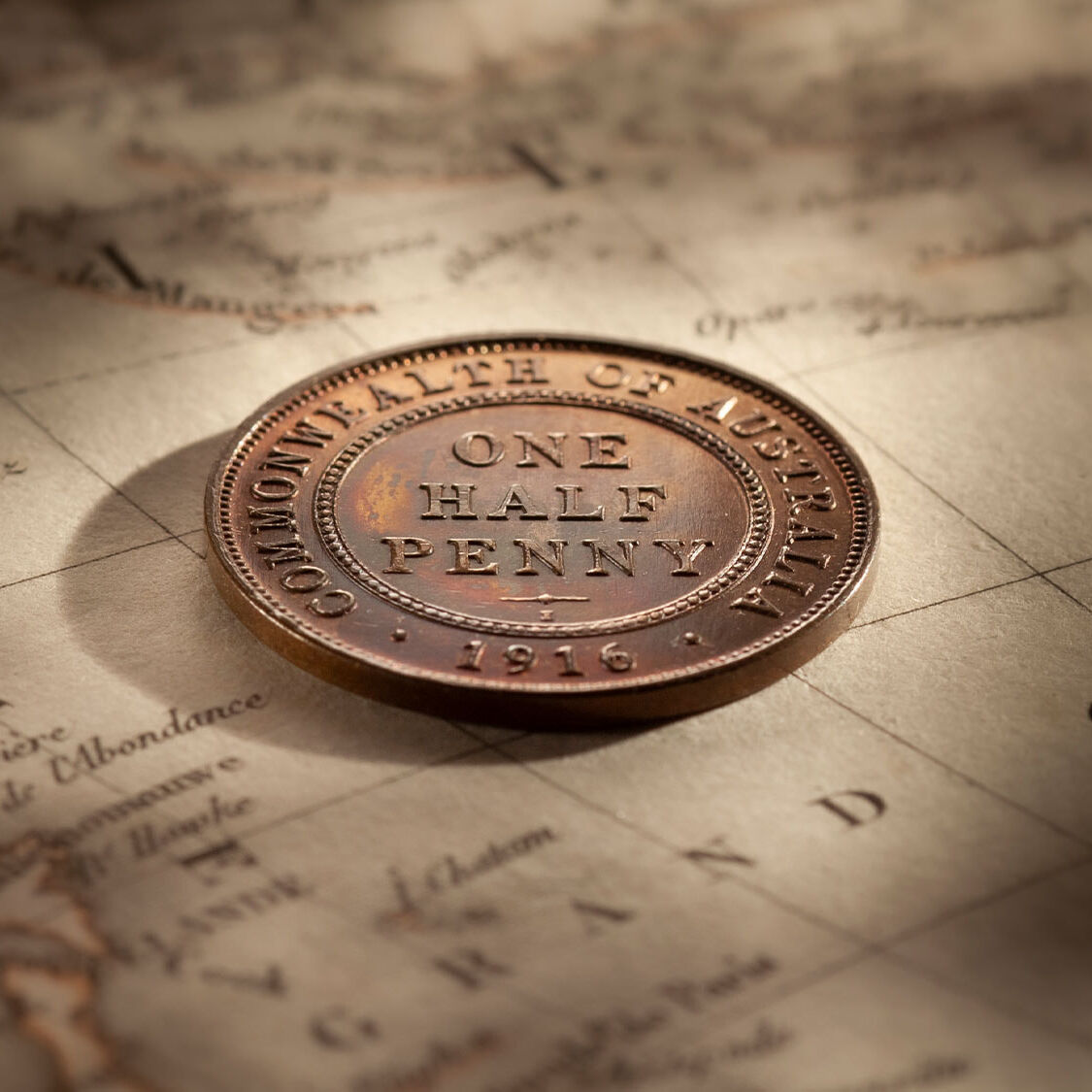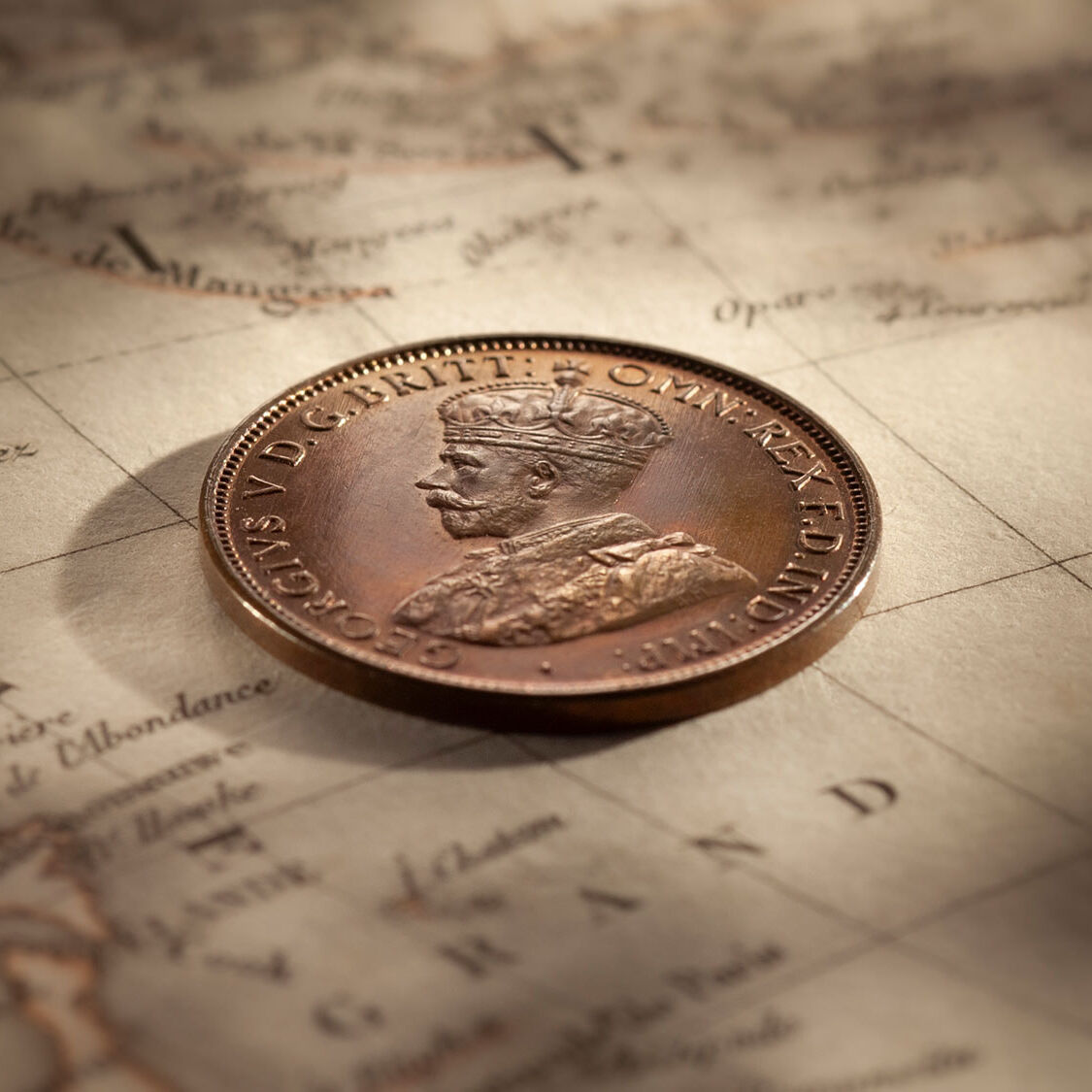Proof 1916 Halfpenny struck as a record piece at the Bombay Mint, believed unique


Australian coins struck in Bombay.
Federation on 1 January 1901 was a pivotal moment in our history, when the six self-governing colonies of Australia became a single country.
Eight years would elapse before the Australian Parliament would pass legislation to allow the striking of Commonwealth of Australia silver coins of two shillings, one shilling, sixpence and threepence. And bronze or cupro nickel coins of the penny and halfpenny. The coins were based on the British system of pounds shillings and pence.
The first silver coins of the new Commonwealth were eventually struck in 1910. Unfortunately, none of Australia’s three mints were set up to strike the new denominations, so the coins were struck at the Royal Mint in London.
The first copper coin of the new Commonwealth was struck in 1911, and again at the Royal Mint London. Between 1916 and 1918 Australia’s copper coins were struck at the Bombay Mint, India.
A history of proof coining
Australian Pre-decimal Coins that were struck as proofs - but not destined for collectors - are technically referred to as Coins of Record.
The term, COIN OF RECORD, is to a large extent self-explanatory. It is a coin that has been minted to put on record a date. Or to record a design.
What is not self-explanatory is that Coins of Record were always struck to proof quality as presentation pieces. And were struck in the most minute numbers satisfying the requirements of the mint rather than the wants of collectors.
Forget the notion of striking ten thousand proofs, as collectors are accustomed to today. Let's talk about striking a total of ten coins ... or maybe less!
For today’s collectors the Coins of Record offer a wonderful link to the past and are extremely rare, two reasons that make them so popular.
There was no commercial angle in the production of Coins of Record. The mints were not out to make money from the exercise.
Quite the reverse, striking a proof coin in our pre-decimal era was a very labour intensive (and hence costly) exercise that would have dented the mints annual budget quite considerably. The prime reason why so few coins were struck.
So, what happened to these Coins of Record? Where did they go? And if they were struck by the mints for their own use, how did they get into collector's hands?
In the main, Coins of Record ended up in the mint’s own archives, preserving its history for future generations. Any coins that were surplus to requirements may also have been sent to a museum or public institution.
Coins of Record were also put on display at public Exhibitions. The two known examples of the Proof 1866 Sovereign and Proof 1866 Half Sovereign were especially struck to exhibit as ‘products of New South Wales’ as part of the Colonial Mints display at the International Colonial Exhibition of 1866 and the International Exposition in Paris, 1867. They were discovered in London in the early 1970s.
It is noted that many of the overseas mints have over time sold off Coins of Record that they considered excess to their requirements allowing them to come into collector's hands. The Royal Mint South Africa sold off several Australian gold proofs in the 1990s.
© Copyright: Coinworks
